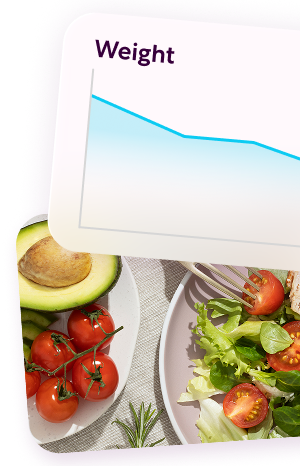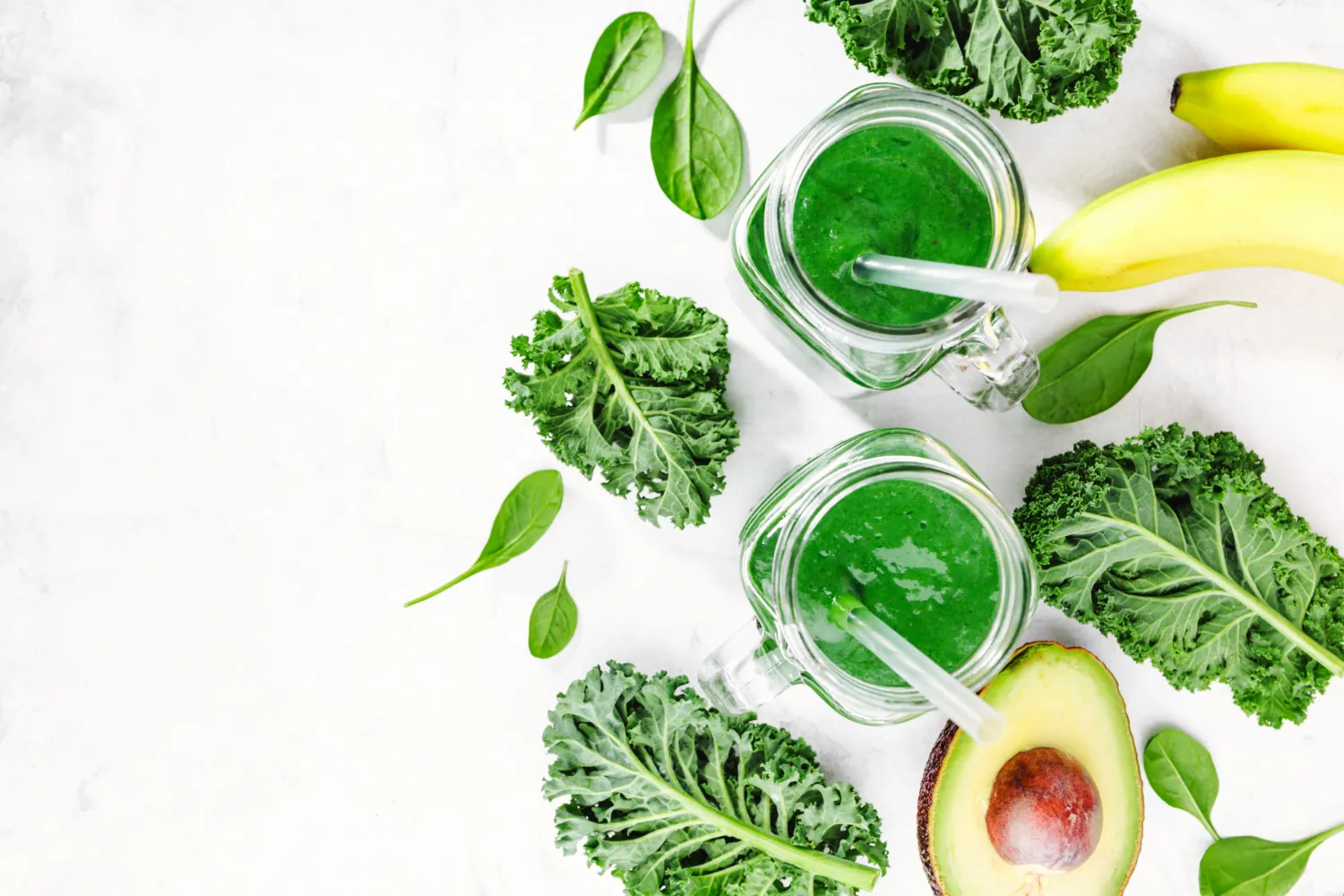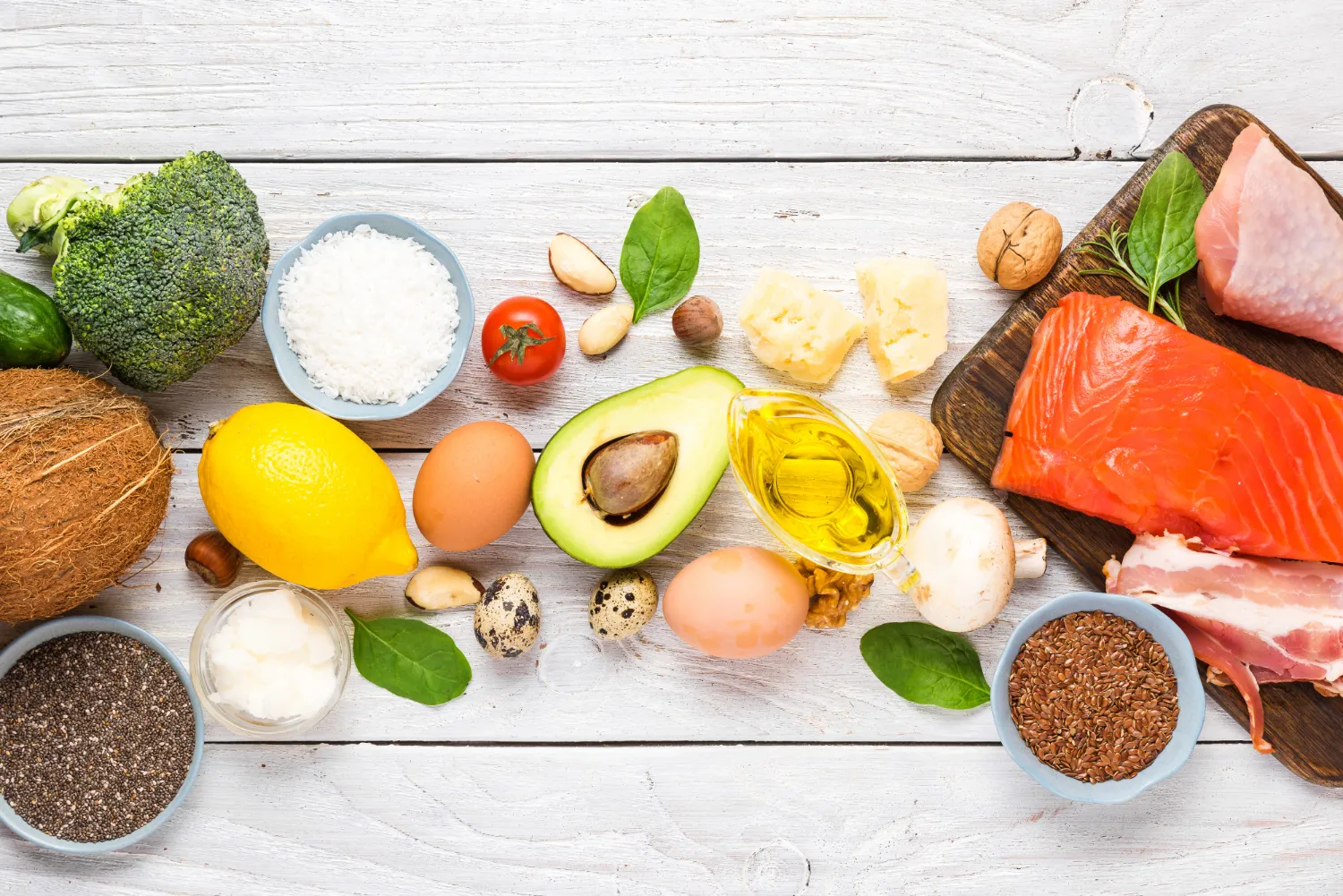Weight loss that fits your goals and your life.
Get your plan
Weight loss that fits your goals and your life.
Get your plan
Entering our 60s can be met with mixed feelings. In a time where we understand who we are and are ready for the freedom of an empty nest, or looking toward retirement, it sadly can be the time where the signs of aging and illness become present.
Fortunately, the human body is incredible at reviving itself; meaning that it is never too late to make a change!
Which can be achieved by altering our diet and carefully adjusting our macronutrient intake.
In this article, we discuss macros for women over 60 years old. We share the importance of macronutrients, covering protein, carbohydrates, and healthy fats needs, how to maintain energy levels, and more.
Why Adjusting Your Macros Is Important After 60

Nutrition is a vital component of the function of the human body. In our youth, we recognize food as a simple fuel source. However, as we enter our 40s, 50s, and 60s and experience aches, pains, weight gain, and illnesses we begin to understand that what we eat plays a major role in our energy levels, overall health, and wellbeing.
For all women, the 40s is where we have our unavoidable encounter with menopause. As our reproductive hormones decline, we experience symptoms such as weight gain, fatigue, hot flashes, poor sleep, and increased appetite. During this time we also encounter age-related muscle loss, decreased bone density, and increased risk of chronic illness.
Age-related muscle loss also known as sarcopenia can lead to decreased strength, functional decline, and loss of independence. While our bone mineral density declines, and steadily decreases for 10–15 years after menopause, dropping by a total of 30–40% by the age of 70. It is estimated that it occurs in one-third of people aged 50–60 and over 50% of people aged over 80.
Meanwhile, the decrease in estrogen can lead to increased inflammation resulting in an increased risk of chronic illnesses including diabetes, hypertension, obesity, mental illness, cardiovascular disease, and cancer.
Even though we are clear of menopause-related symptoms in our 60s, factors such as decreased muscle mass and bone mass along with the rising risk of chronic illness are still present.
These age-related health changes require an adjustment of our nutrition. In our youth, faster metabolism and greater physical activity will allow us to get away with eating beyond our daily calorie and macronutrient intakes. However, as we age, our body requires us to eat enough protein to preserve muscle mass, carbohydrates for fuel, and fats to absorb vital nutrients and support our brain, heart, and immune system.
Protein Needs for Women Over 60
Protein is vital for our function. More than just a muscle builder, it plays a role in chemical reactions, the immune system, hormone regulation, digestion, weight control, and the replacement of our cells.
Because of this, we need to ensure we meet our daily protein goals. Below we discuss our recommended protein, including best sources and protein-rich meal ideas to help you hit your protein target.
How Much Protein Do You Really Need?
Protein intake should make up approximately 25–30% of our total daily calories. The recommended daily intake is 1.2 to 1.6 grams of protein per kilogram of body weight.
E.g. 1.6 grams x bodyweight in kilograms =
1.6 grams x 75 kg = 84 grams of protein per day.
This modest amount of proteint can easily be divided evenly across three to four meals. Below we have listed the protein content of different
Best Sources of Protein for Muscle Maintenance

The best protein sources for maintaining muscle mass are those you can eat consistently. The best sources are nutrient-dense whole foods. These will provide you with other nutrients.
Beyond this, protein-fortified foods and supplements are excellent for helping you hit your target. Shakes in particular are great, as they boost your intake with little to no preparation time
Below is a table containing quality protein sources. Each source is based on a 100 g serving size.
From the list above we can see that animal-based foods have the highest protein content while containing a modest amount of calories. The plant-based protein sources are excellent for individuals on planted-based, vegan, and vegetarian diets.
The key is to balance your protein content and calorie content. For example, chicken breast is an excellent source of protein, with 100 grams containing 31 grams for just 165 kcal. Meanwhile, walnuts are far more calorie-dense, with 100g containing just 15 grams of protein for 654 kcal.
This is not to say that walnuts are bad for you, but rather that you need to be aware that even though it is a nutritious, high-protein food, too much of it can blow out your calorie intake.
Protein powders are another great example of economical protein sources. Both whey protein and planted-based protein shakes offer high protein content for fewer calories with 100g of either protein containing roughly 100 calories.
We recommend creating your diet with high-protein, low-calorie food sources, and supplementing your diet with calorie-dense, high-protein food sources, and shakes. This will help you hit your protein targets to preserve muscle mass.
Protein-Rich Meal Ideas
The key to sustaining a high-protein diet is to have plenty of variety. Below is a list of protein-rich meals ideal to help you plan your meals.
Overnight Oats = 21.4g of protein
- ½ cup oats (120ml), 20g walnuts, ½ cup almond milk (120ml), Greek yogurt, mixed berries, ½ scoop protein powder, cinnamon
Poached Eggs = 22g of protein
- 2x eggs, 1 slice whole grain bread, ½ avocado, 30g hummus
Grilled Chicken Quinoa Salad = 35g of protein
- 100g grilled chicken, 100g quinoa, 20g chickpeas, red pepper, cucumber, parsley, lemon
Protein Smoothie = 32g of protein
- 1 scoop protein powder, 1 tbsp flaxseeds, ½ cup almond milk (120ml), mixed berries, banana
The Role of Carbohydrates for Energy and Digestion

Carbohydrates are essential to a balanced diet, providing our body with energy and metabolizing insulin and fat. While the diet industry demonizes carbohydrates, we want to assure you that they are an essential part of your diet, making up 45–60% of your total calorie intake.
Whole Grains vs. Simple Carbs: What to Choose
Carbohydrates are divided into two different types: simple and complex carbohydrates. Below we break down each type.
Simple Carbohydrates
Simple carbohydrates consist of a simple chemical structure that is easily utilized for energy. Present in sodas, honey, and sugary foods, they cause a rapid rise in the blood sugar in insulin. These foods are often calorie-dense while offering little nutritional value.
When we consume these foods, we will feel that sudden sugary high and burst of energy that will sadly pass, leaving us feeling tired and hungrier than before.
Complex Carbohydrates
Complex carbohydrates contain a complex structure. Found in foods such as fruits, vegetables, unrefined whole grains, and brown rice they provide a slow, steady energy release, gradually increasing blood sugar.
These foods are also referred to as low glycemic or low-GI foods and are more economical, provide sustainable energy, keep us full, and are nutrient-dense.
Two other forms of complex carbohydrates are starches and fiber. Starches contain a large number of glucose molecules and are found in foods such as potatoes, chickpeas, pasta, and wheat.
Meanwhile, dietary fiber is a non-digestible complex carbohydrate that promotes healthy bacteria growth in the colon, improving gut health, and digestion, and regulating healthy blood cholesterol levels.
High-Fiber Foods to Support Digestive Health
Building your diet around high fiber is one of the best things you can do for your health. The recommended daily fiber intake is 21g for women over 50. Below is a list of high-fiber foods that you can add to your diet to maintain energy levels and support your digestive health.
Like our list of high-protein foods, we need to balance our fiber content and calorie intake. While these foods are listed in 100g serving sizes you will not likely consume all of them in this quantity.
For example, it will be more common to consume 100 grams of oats or sweet potato than 100 grams of pinto beans. We recommend adding a variety of high-fiber foods to your diet. This will help you hit your daily target and keep your meals interesting.
Carbohydrate-Rich Meal Ideas
When you focus on eating high-fiber foods, hitting your daily fiber goals can be easy! Below is a list of high-fiber meals that can help you hit your daily target.
- Overnight Oats – 13g of fiber
- ½ cup (120ml) oats, 20g walnuts, ½ cup (120ml) almond milk, ½ cup (75g) mixed berries, ½ scoop protein powder, cinnamon, Greek yogurt
- Grilled Chicken Quinoa Salad – 12g of fiber
- 100g (3.5 oz) grilled chicken, 100g (½ cup) quinoa, 20g (1 tbsp) chickpeas, red pepper, cucumber, parsley, lemon
- Kale Caesar Salad (Serves 2) – 7g of fiber
- 400g (14 oz) kale, 1 avocado, little gem lettuce, 2 slices sourdough bread, olive oil, parmesan, garlic
- Vegan Jambalaya (Serves 2) – 17g of fiber
- 4 celery sticks, 1 large onion, 1 yellow pepper, 1 garlic clove, chili flakes, dried oregano, 115g (½ cup) brown basmati rice, 400g (14 oz) chopped tomatoes, 400g (14 oz) butter beans
Healthy Fats for Brain and Heart Health

Healthy fats such as omega-3 fatty acids and unsaturated fats have many roles in the body, including helping maintain our brain and heart health. They make up 25–35% of your total calorie intake. The recommended daily intake of omega-3 is 1.1 for women 51 years and over.
Why Omega-3s and Unsaturated Fats Matter
Omega-3 and unsaturated have many important functions in the body. Omega-3 is essential because the human body can’t produce them. They are vital for cell function, have anti-inflammatory properties, as well as support the heart, brain, eyes, and mental health.
Meanwhile, unsaturated fats are vital, improving cholesterol levels, reducing inflammation, and supporting function, and cell growth.
Best Sources of Healthy Fats
Incorporating Fats into Daily Meals
Incorporating healthy fats into meals is simple as many delicious foods are high in omega-3 and unsaturated fats. From the list above, we can see that some foods contain more than our recommended daily intake. We recommend combining a variety of omega-3 and unsaturated foods into your diet to hit your daily targets.
How to Balance Your Macros for a Typical Day
Balancing your macronutrients starts by identifying your daily calorie intake and your macronutrient ratios. This can be done by using a calorie-tracking app. Here you simply add your age, height, weight, gender, and activity level. They then provide you with a daily calorie intake.
Once this is complete, you can set your macronutrient ratio. This is your carbohydrate, protein, and fat percentages. Here is an example profile containing daily calorie intake, and macronutrient ratios.
Profile
- Name: Jennifer
- Goal: Maintain Weight
- Age: 65
- Gender: Female
- Height: 170 cm
- Weight: 70 kg
- Activity Level: Light (1–3 times/week)
- Daily Calorie Intake: 1,700 Calorie/day
Macronutrient Ratio
- Carbohydrates: 50% of total calories (212g)
- Protein: 20% of total calories (85g)
- Fat: 30% of total calories (57g)
- These figures are based on the 1,700 calories/day. We then divide our daily calories based on our macronutrient levels. This can be done inside a calorie-tracking app, giving you the exact amount in grams. These figures are divided across each meal. Below is a basic sample where we have divided the macronutrients evenly, however, you can adjust them to suit your needs.
Macro Tips for Muscle Maintenance and Energy in Women Over 60
Preserving our muscle mass and energy levels is our top priority. It enables us to maintain strength, function, and independence. Below we discuss how to achieve both, to help you enhance your health.
Prioritize Protein to Preserve Muscle Mass
When you create your meals they should contain between 25–30g of protein. Protein is essential for preserving lean muscle mass and improving satiety. Adding protein to each meal will help keep you full, and help you maintain muscle and function for long-term health.
Balance Carbs for Steady Energy Throughout the Day
Alongside you protein intake, add a source of complex carbohydrates in the from of whole grains, brown rice, fruit, vegetables. As mentioned, these foods with provide your body with a slow release of energy, while their high-fibre content will help improve satiety and gut health.
Include Healthy Fats for Energy and Hormonal Balance
Round out your high-protein, complex carbohydrate diet with healthy fats in foods such as salmon, mackerel, walnuts, flaxseeds, pumpkin seeds, and eggs. These foods are packed with healthy fats and will help support brain, heart, eye, and mental health. Furthermore, their anti-inflammatory properties will can reducing inflammation in the body, decreasing the risk of many chronic illnesses.
Final Thoughts on Balancing Macros for Women Over 60
Changing our nutrition and adjustiong our macronutrient intake can be difficult task. Fortunately, focusing on your protein, carbohydrate, and healthy fat intake is easier than ever with the help of smart devices and online resources.
For those of us over 60, it can be challenging, but let us assure you, that it is worth it. By adjusting our nutrition, we can not only regain control of our health, we can launch ourselves into a healthy, independent lifestyle that we never thought was possible.
If you want to try adjusting your macronutrients, download a calorie-tracking app on your smart phone, input your daily calorie limit and start making changes right now. Making those small changes now will have major positive outcome for the future.
Weight loss that fits your goals and your life.
Get your plan
Sources
FAQs
What are the recommended macronutrient ratios for women over 60?
Women over 60 should aim for a balanced macronutrient ratio of approximately 40% carbohydrates, 35% protein, and 20-30% fats to support muscle maintenance, energy levels, and overall health.
Why is protein important for women over 60?
Protein is crucial for preserving muscle mass, which tends to decline with age. A higher protein intake also supports metabolic function and aids in recovery from physical activities.
How can women over 60 ensure they get enough healthy fats?
Healthy fats from sources like avocados, nuts, seeds, olive oil, and fatty fish are essential for heart health and hormone regulation. Aim for 20-30% of your daily intake to come from these fats.
Should women over 60 reduce their carbohydrate intake?
Carbohydrates are still necessary for energy, but focusing on complex carbs like whole grains, vegetables, and legumes can help maintain energy without spiking blood sugar levels.
How much protein should women over 60 aim for each day?
Women over 60 should aim for 1.0 to 1.2 grams of protein per kilogram of body weight to support muscle health, which translates to approximately 60-80 grams of protein per day depending on individual needs.






